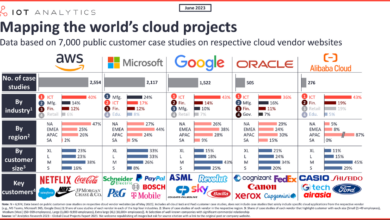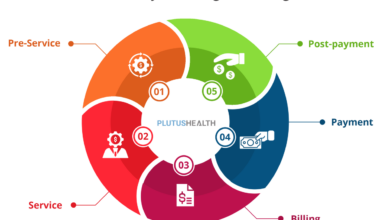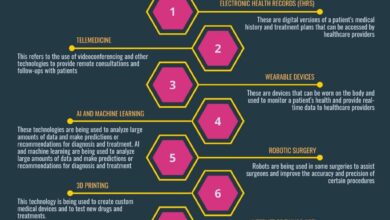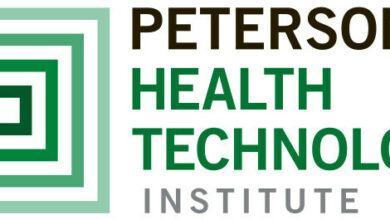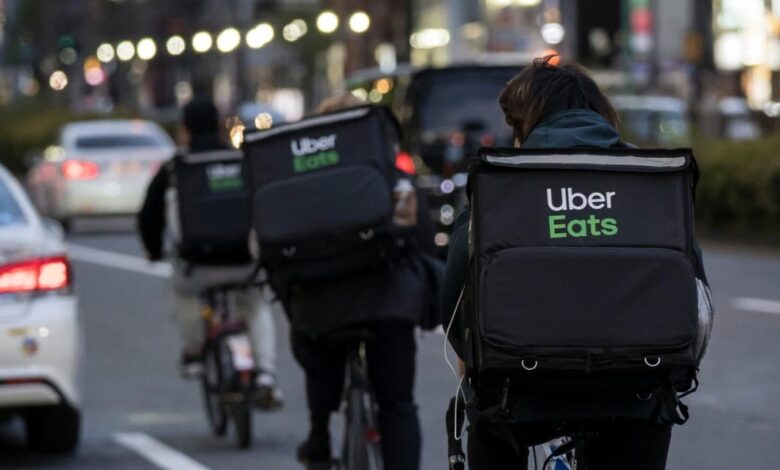
Uber Health Same Day Prescription Delivery
Uber Health same day prescription delivery is revolutionizing healthcare access! Imagine needing medication urgently – no more frantic calls or long waits at the pharmacy. This service is changing how we receive essential medicines, offering speed, convenience, and a potential lifeline for those who need it most. This post dives into the world of same-day prescription delivery, exploring how Uber Health is making a difference, the logistics involved, and what the future holds for this rapidly evolving field.
We’ll examine the market landscape, comparing Uber Health’s services to competitors, analyzing the technology behind the scenes, and discussing the legal and regulatory hurdles involved in delivering medications quickly and safely. We’ll also look at the potential impact of automation and AI, and how this innovative approach to healthcare access is shaping the future of medicine.
Market Analysis of Same-Day Prescription Delivery
The same-day prescription delivery market is experiencing explosive growth, driven by increasing demand for convenience and faster access to medication. This burgeoning sector presents significant opportunities for established players and new entrants alike, but also presents considerable challenges in terms of logistics, regulatory compliance, and cost management.
Current Market Size and Growth Potential
The market for same-day prescription delivery is difficult to quantify precisely due to the fragmented nature of the industry and the lack of comprehensive, publicly available data. However, several market research firms estimate the market to be valued in the billions of dollars globally, with a compound annual growth rate (CAGR) projected to be in the double digits for the foreseeable future.
This growth is fueled by factors such as the aging population, increasing prevalence of chronic diseases requiring regular medication, and the rising adoption of telehealth services. For example, the increasing use of telehealth during the COVID-19 pandemic significantly boosted demand for convenient prescription fulfillment options, accelerating the adoption of same-day delivery services. The market is expected to continue its upward trajectory as more people become aware of and comfortable using these services.
Key Players and Competitive Strategies
Several major players are vying for dominance in the same-day prescription delivery market. These include established pharmacy chains integrating delivery services into their existing operations, dedicated prescription delivery startups, and partnerships between pharmacies and third-party logistics providers. Competitive strategies vary, with some companies focusing on broad geographic reach, others on specialized services (e.g., delivery to specific patient populations), and still others on superior technology and customer experience.
For example, some companies are leveraging AI-powered routing optimization to minimize delivery times and costs, while others are focusing on building strong relationships with healthcare providers to ensure seamless integration into the prescription fulfillment process. The competitive landscape is dynamic, with mergers, acquisitions, and strategic alliances reshaping the market constantly.
Consumer Demographics and Preferences
The typical consumer of same-day prescription delivery services is likely to be someone who values convenience and time efficiency. This demographic includes busy professionals, individuals with limited mobility, those living in areas with limited access to pharmacies, and patients with urgent medication needs. Preferences vary, but generally include fast and reliable delivery, transparent pricing, and easy-to-use mobile applications or websites.
Consumer reviews and feedback indicate a strong preference for real-time tracking of deliveries and excellent customer service. The market is also seeing increasing demand for personalized services, such as medication reminders and refill notifications, which enhances patient adherence and overall satisfaction.
Pricing Models of Same-Day Prescription Delivery Services
The pricing models for same-day prescription delivery services can vary significantly depending on the provider, location, and specific service offered. Generally, costs are composed of a base fee, a delivery fee, and potentially additional charges for things like expedited delivery or special handling.
| Service Name | Base Fee | Delivery Fee | Additional Charges |
|---|---|---|---|
| Example Service A | $5 – $10 | $5 – $15 (depending on distance) | Expedited delivery: $10, Special handling: $5 |
| Example Service B | $0 (included in prescription cost) | $8 – $12 (depending on distance) | None |
| Example Service C | $3 | $7 – $10 (depending on distance and time of day) | Refrigerated delivery: $3 |
Uber Health’s Role in Same-Day Prescription Delivery

Source: adherent360.com
Uber Health is rapidly becoming a significant player in the same-day prescription delivery market, leveraging its existing infrastructure and expanding its services to meet the growing demand for convenient and timely medication access. This is achieved through a combination of technological prowess, strategic partnerships, and a focus on streamlining the entire process for both patients and healthcare providers.Uber Health’s current offerings extend beyond simple ride-sharing.
It provides a platform that connects healthcare providers with transportation options, including same-day prescription delivery. This is particularly beneficial for patients who require immediate medication, such as those with chronic conditions or acute illnesses. The service aims to improve medication adherence and overall patient outcomes by removing logistical barriers to timely medication access.
Uber Health’s same-day prescription delivery is a game-changer, especially when considering healthcare access. The recent new york state nurse strike montefiore richmond university deals highlighted the fragility of our healthcare system, emphasizing the need for convenient solutions like reliable medication delivery. This service ensures patients receive their prescriptions promptly, regardless of potential disruptions to traditional healthcare services.
Uber Health’s Technological Infrastructure
Uber Health’s technological infrastructure is built upon its robust ride-sharing platform, adapted and enhanced for healthcare-specific needs. The system allows for secure scheduling and tracking of prescription deliveries, real-time communication between pharmacies, drivers, and patients, and integration with electronic health records (EHR) systems. This integration ensures smooth data flow and minimizes manual processes, ultimately leading to faster and more efficient delivery.
Uber Health’s same-day prescription delivery is a game-changer for patient care, ensuring timely access to medications. This efficiency is further enhanced by advancements in medical technology, like the integration of Nuance’s generative AI scribe with Epic EHRs, as detailed in this article: nuance integrates generative ai scribe epic ehrs. Faster documentation means quicker prescription processing, ultimately speeding up the entire process and improving the Uber Health delivery timeline even more.
A key feature is the secure handling of patient information, adhering to strict HIPAA compliance standards. The platform uses sophisticated algorithms to optimize delivery routes and assign drivers based on proximity and availability, minimizing delivery times.
Uber Health’s Partnerships
Uber Health’s success in same-day prescription delivery hinges on its strategic partnerships with pharmacies and healthcare providers. These collaborations are crucial for integrating the service seamlessly into existing workflows. By working with a wide network of pharmacies, Uber Health ensures broad coverage and accessibility for patients. These partnerships also allow for direct integration with pharmacy systems, enabling automated prescription requests and tracking.
Furthermore, collaborations with healthcare providers, such as hospitals and clinics, streamline the referral process, making it easier for patients to access same-day delivery services. Examples of such partnerships include agreements with major pharmacy chains and large hospital systems, enabling a wide reach and integration into established healthcare networks.
Comparison with Competitors
While Uber Health is a strong contender, it faces competition from other companies offering similar services. For example, a comparison with PillPack (now owned by Amazon Pharmacy) reveals differences in approach. PillPack focuses heavily on pre-sorted medication packaging and subscription management, whereas Uber Health prioritizes on-demand, same-day delivery for individual prescriptions. Another competitor, Alto Pharmacy, combines telehealth services with prescription delivery, offering a more integrated healthcare experience.
While Alto may offer more holistic care, Uber Health’s strength lies in its broad reach and existing infrastructure, making it a readily accessible solution for a wider range of healthcare providers and patients. The key differentiator for Uber Health remains its seamless integration with existing healthcare workflows and its extensive network of drivers, enabling swift and reliable same-day delivery across various geographical areas.
Logistics and Operations of Same-Day Prescription Delivery
Same-day prescription delivery presents unique logistical hurdles, demanding a finely tuned operation to ensure medications reach patients swiftly and accurately. The success hinges on a complex interplay of technology, efficient routing, and reliable personnel, all working in concert to overcome the inherent time constraints. This section delves into the operational intricacies of this rapidly growing sector.
Logistical Challenges of Same-Day Prescription Delivery
The biggest challenge in same-day prescription delivery is the incredibly tight timeframe. Unlike other delivery services, there’s a critical urgency to get these medications to patients as quickly as possible. This necessitates a robust and adaptable system capable of handling unexpected delays, such as traffic congestion, pharmacy processing times, and even driver unavailability. Accuracy is paramount; incorrect medications or dosages can have serious consequences, demanding meticulous attention to detail at every stage of the process.
Maintaining a high level of accuracy while operating under immense time pressure is a major operational challenge. Another key challenge is maintaining a sufficient number of drivers and vehicles to meet demand, especially during peak hours or in areas with high prescription volumes. Scalability is crucial to accommodate fluctuations in demand and ensure consistent service.
Delivery Methods Employed
Same-day prescription delivery services typically employ a combination of delivery methods to optimize efficiency and coverage. Dedicated courier networks, often using motorcycles or scooters for navigating congested urban areas, are common. These vehicles are nimble and can access areas inaccessible to larger vehicles. For wider geographical coverage and larger orders, cars or vans might be utilized. Partnering with existing delivery networks, such as those operated by companies like Uber, allows for leveraging existing infrastructure and driver pools, increasing reach and flexibility.
In some cases, particularly for deliveries within a limited radius, the pharmacy itself might handle the delivery, directly employing staff for local drop-offs. The choice of delivery method often depends on factors like distance, order size, and traffic conditions.
Technology for Tracking and Managing Prescription Deliveries
Real-time tracking and management are crucial for same-day prescription delivery. Sophisticated software platforms are employed to monitor every step of the process, from order placement to final delivery. These systems integrate with pharmacy management systems to receive order information and track medication preparation. GPS tracking on delivery vehicles provides real-time location updates, allowing for efficient routing and proactive management of potential delays.
Automated notifications keep patients informed about the status of their delivery, providing estimated arrival times and updates on any unexpected delays. Furthermore, these systems often incorporate features for driver management, including dispatch, route optimization, and performance monitoring. Data analytics plays a crucial role, providing insights into operational efficiency and allowing for continuous improvement. For example, analyzing delivery times helps optimize routes and predict potential bottlenecks.
Flowchart of Same-Day Prescription Delivery Process
The following flowchart illustrates a simplified version of the same-day prescription delivery process:[Imagine a flowchart here. It would start with “Prescription Order Placed (Patient/Doctor)”, branching to “Pharmacy Receives Order” and “Order Verification/Preparation”. Then it would proceed to “Dispatch to Courier”, followed by “Delivery in Progress (GPS Tracking)”. The next step would be “Delivery Confirmation (Patient Signature/Verification)”, leading to “Order Completion (System Update)” and finally “Delivery Metrics/Analytics”.
Each step would be visually connected with arrows, clearly showing the flow of the process.]
Regulatory and Legal Considerations
Navigating the legal landscape of same-day prescription delivery is crucial for companies like Uber Health. Success hinges on understanding and adhering to a complex web of regulations concerning patient privacy, drug handling, and operational compliance. Failure to do so can lead to significant financial penalties and reputational damage.The complexities involved in ensuring legal compliance extend beyond simply delivering a package; they encompass the entire process, from order placement to final delivery and beyond.
This includes the secure handling of sensitive patient data and the strict adherence to state and federal regulations governing prescription drugs.
Key Regulatory Bodies and Compliance Requirements
Several key regulatory bodies oversee the various aspects of prescription drug delivery. The Food and Drug Administration (FDA) sets standards for drug manufacturing, handling, and storage, impacting how pharmacies and delivery services must handle medications to maintain their efficacy and safety. State boards of pharmacy also play a significant role, often dictating specific regulations regarding prescription dispensing and delivery within their jurisdictions.
The Health Insurance Portability and Accountability Act (HIPAA) sets stringent rules for protecting the privacy and security of protected health information (PHI), a critical concern when patient data is involved in the delivery process. Finally, the Department of Transportation (DOT) may have regulations impacting the transportation of pharmaceuticals, particularly concerning hazardous materials. Compliance with these various regulations requires robust internal systems and procedures.
Legal Implications of Handling Sensitive Patient Information
The handling of patient data in prescription delivery presents significant legal risks. HIPAA violations can result in substantial fines and legal repercussions. For example, unauthorized access or disclosure of patient information, such as name, address, diagnosis, or medication details, is a serious breach. Uber Health, and any partner pharmacies, must implement strong security measures, including data encryption and access controls, to protect patient PHI throughout the delivery process.
This includes secure electronic systems for order processing, driver training on data privacy, and robust data breach response plans. Failure to adequately protect patient data can lead to lawsuits, regulatory investigations, and severe financial penalties.
Potential Legal Risks Associated with Late or Incorrect Deliveries
Late or incorrect prescription deliveries pose several legal risks. Delayed delivery of essential medications can have serious health consequences for patients, potentially leading to liability claims for negligence or malpractice. Similarly, delivering the wrong medication or an incorrect dosage can result in severe harm, with potential for substantial legal repercussions. These risks highlight the importance of robust tracking systems, accurate order processing, and well-trained delivery personnel.
Insurance coverage and comprehensive risk management strategies are also essential to mitigate potential liabilities.
Potential Legal and Regulatory Hurdles for Nationwide Expansion
Expanding same-day prescription delivery nationwide presents numerous legal and regulatory challenges.
- Varying State Regulations: State laws governing prescription drug dispensing and delivery differ significantly, requiring compliance with a patchwork of regulations across the country. This necessitates significant legal and operational resources to ensure compliance in each jurisdiction.
- HIPAA Compliance Across Multiple Jurisdictions: Maintaining consistent HIPAA compliance across a nationwide network presents complex challenges, especially when integrating with numerous pharmacies and healthcare providers in different states.
- Drug Storage and Transportation Requirements: Ensuring proper storage and transportation of medications at appropriate temperatures and under secure conditions across diverse geographical areas is crucial and legally mandated.
- Liability and Insurance: Establishing adequate insurance coverage to address potential liabilities associated with late or incorrect deliveries, medication spoilage, and data breaches, across a larger geographical area significantly increases complexity.
- Integration with State Prescription Drug Monitoring Programs (PDMPs): Integrating with various state PDMPs to prevent prescription drug abuse and monitor patient medication histories necessitates considerable technological and logistical adaptations.
Future Trends and Innovations
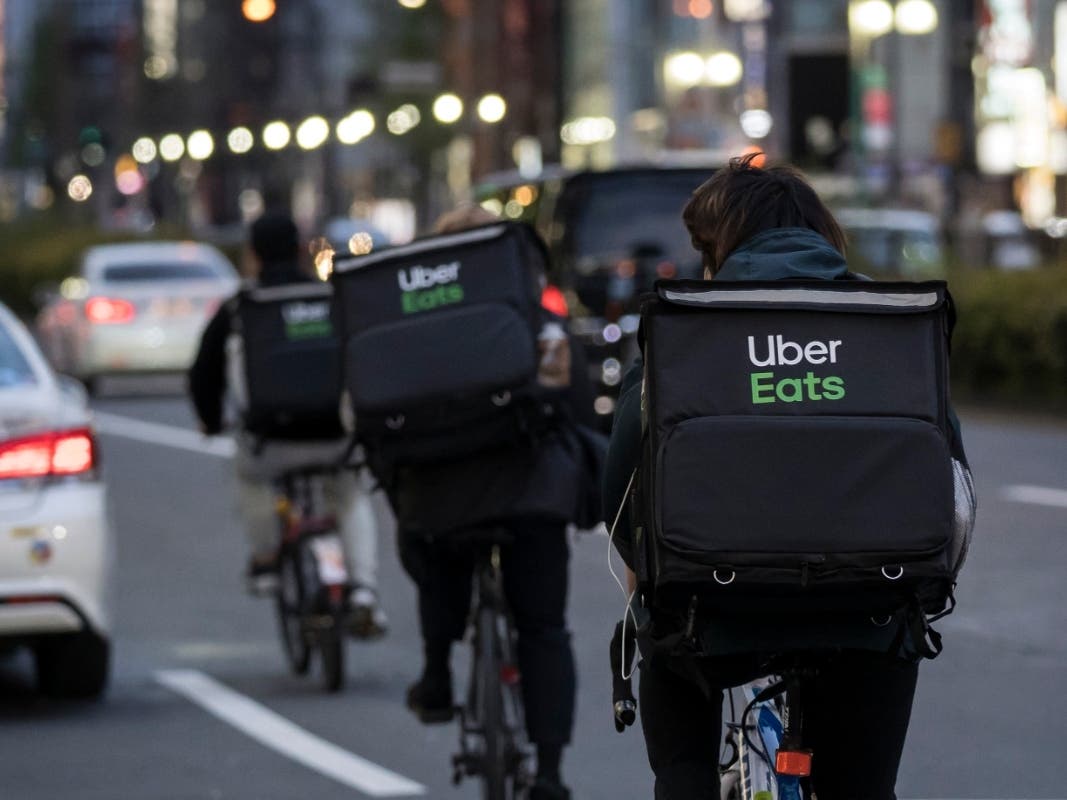
Source: patch.com
The landscape of same-day prescription delivery is poised for significant transformation, driven by technological advancements and a growing demand for convenient healthcare access. We’re moving beyond simple delivery to a future where personalized, efficient, and integrated systems dominate the market. This evolution will be shaped by automation, artificial intelligence, and a focus on enhancing the overall patient experience.
The integration of technology will be pivotal in improving efficiency and reducing costs across the entire delivery chain. This will encompass everything from optimizing delivery routes using real-time traffic data to implementing predictive analytics to anticipate medication needs and proactively manage inventory.
Automation and Artificial Intelligence in Same-Day Prescription Delivery
Automation will play a crucial role in streamlining the entire process, from order fulfillment to delivery. Robotic process automation (RPA) can automate repetitive tasks such as data entry and order processing, freeing up human staff to focus on more complex issues and patient care. Artificial intelligence (AI) can optimize delivery routes, predict demand fluctuations, and personalize the customer experience through chatbots and virtual assistants that answer common questions and provide real-time updates on order status.
For example, Amazon’s use of AI-powered robots in their fulfillment centers demonstrates the potential for significant efficiency gains in a similar logistical setting. This technology, adapted for pharmacies, could drastically reduce order processing times.
Innovative Solutions for Efficiency and Customer Experience
Several innovative solutions are already emerging to improve the efficiency and customer experience of same-day prescription delivery. Drone delivery is gaining traction, particularly in rural areas with limited access to traditional transportation. Companies like Zipline are already using drones to deliver medical supplies, including medications, in several countries. Furthermore, the integration of telehealth platforms with same-day delivery services offers a seamless experience for patients, allowing them to consult with a doctor virtually and receive their prescription delivered to their doorstep within hours.
This integrated approach is streamlining healthcare access, especially for patients with mobility limitations or those in remote areas. Another innovative solution is the use of smart lockers and automated dispensing units, allowing patients to pick up their medications at their convenience, eliminating the need for a direct delivery driver interaction for every order.
Uber Health’s same-day prescription delivery is a game-changer for patient care, offering speed and convenience. This rapid delivery model contrasts sharply with the slower pace of larger healthcare deals, like the one reported by Reuters, where NextGen is exploring a sale. The contrast highlights how different sectors of healthcare are evolving at different speeds; Uber Health’s agility is a key factor in its success.
A Visual Representation of the Future of Same-Day Prescription Delivery, Uber health same day prescription delivery
Imagine a futuristic visualization: a sleek, intuitive mobile app displaying a patient’s medication profile, allowing them to reorder with a single tap. AI-powered route optimization ensures the fastest and most efficient delivery, with real-time tracking displayed on the app. The delivery itself might involve a self-driving vehicle or a drone, depending on location and order urgency. Upon arrival, the patient receives a notification and can access their medication through a secure smart locker or via contactless delivery by a human driver.
The entire process is seamless, personalized, and efficient, integrating telehealth consultations, automated order processing, and advanced logistics to provide a superior patient experience. The visual emphasizes the technological integration, focusing on the ease and convenience for the patient, with a clean, minimalist design highlighting the speed and efficiency of the process. The color scheme uses calming blues and greens to convey trust and reliability, while subtle technological elements, such as holographic displays on the delivery vehicle or app interface, hint at the advanced technology underpinning the service.
The overall impression is one of effortless convenience and modern healthcare accessibility.
Outcome Summary: Uber Health Same Day Prescription Delivery
Ultimately, Uber Health’s foray into same-day prescription delivery represents a significant leap forward in healthcare accessibility. While challenges remain in areas like regulation and logistics, the convenience and speed offered by this service are undeniable. The future looks bright for this sector, with innovations in technology promising to further enhance efficiency and patient experience. The ability to receive vital medications quickly and conveniently is a game-changer, and it’s exciting to see how this service will continue to evolve and improve lives.
Query Resolution
What types of prescriptions can be delivered through Uber Health?
The types of prescriptions vary depending on the pharmacy and their partnership with Uber Health. It’s best to check with your pharmacy directly to see if your specific medication is eligible.
How much does Uber Health same-day prescription delivery cost?
Pricing varies based on location, distance, and the pharmacy’s fees. The total cost will be displayed during the checkout process within the Uber Health app or platform.
Is my prescription information secure with Uber Health?
Uber Health adheres to strict privacy regulations (HIPAA in the US) to protect patient information. They utilize secure systems and protocols to ensure the confidentiality of your health data.
What happens if my delivery is late?
Uber Health aims for timely delivery but unforeseen circumstances can occur. If your delivery is significantly delayed, contact Uber Health customer support for assistance.
Can I tip my delivery driver?
Yes, you can usually tip your delivery driver through the app, just like with other Uber services.
